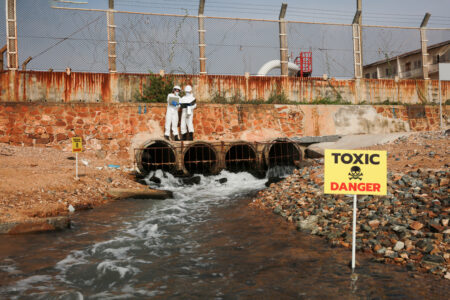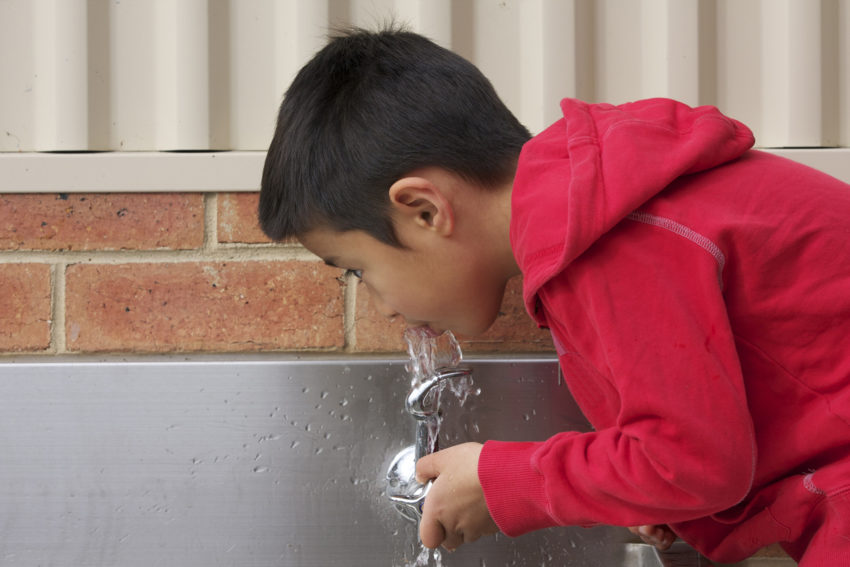
Share On Social!
Children across the U.S. acquire and education through public school — they also receive lead exposure, according to new research.
At least 22 states failed to protect students from water contamination, according to a study conducted by the Environment America Research & Policy Center and U.S. PIRG Education Fund.
Worse, only two of the 32 tested states received a B rating. Not one state made an A. Schools in states with large Latino populations also fared poorly.
“It’s concerning,” Julie Ma, a mother in Boston (19.4% Latino) who prepares water bottles for her kids every day, told CBS. “I really would like to get the lead out of the water supply as fast as possible for the students … Many schools don’t even know if they have it and haven’t been able to make those changes.”
Filtered water can help alleviate lead exposure.
Use the Salud America! Water Bottle Fountain Action Pack to boost access to clean, filtered water in your student’s school today!
ADD A WATER BOTTLE FOUNTAIN IN YOUR SCHOOL!
The EPA is also taking public comments concerning their proposed rule that would reduce protections for thousands of lakes and rivers under the Clean Water Act. The public comment period ends on April 15. Send EPA Chief Andrew Wheeler an email today, urging his agency to keep our waters clean!
EMAIL EPA: WE WANT CLEAN WATERS!
What Does the Research Say?
Well, consistent with the study’s numbers, it’s not good.
States with high Latino populations, such as Texas (39.4% Latino), New Mexico (44.%), and Florida (25.6%), all received failing grades due to a lack of rigorous regulations that prevent lead exposure in water.
The graded categories include: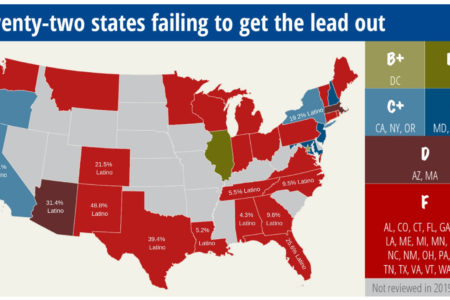
- Lead Standard in Water
- Testing Protocols
- “Get The Lead Out” Steps
- Public Disclosure and Transparency
- Applicability
In Texas, 71% of tested schools contained lead contamination above 1 part per billion. As one of the states that received an F grade, its children could be facing a significant amount of lead exposure.
Unfortunately, Texas’ numbers do not stand out when compared to other states:
- Oregon (13.1% Latino) – Research found that 88% of the 100 tested school districts contained lead in drinking water
- Montana (3.8%) – 75% of the four tested school districts contained lead concentrations at or above 1 ppb
- California (39.1%) – More than 400 schools contained lead concentrations of 5 ppb or greater
- Arizona (31.4%) – 48% of the 13,380 taps tested contained lead concentrations
- Washington (12.7%) – 8% of taps tested contained lead concentrations above 1 ppb
- Utah (14%) – 90% of the 249 schools tested contained lead concentrations
The study also found that most states only follow federal, reactionary regulations concerning lead in drinking water instead of prevention-based guidelines.
Water safety policy and lead levels significantly impact Latino children, who make up 26% of public-school enrollment.
How Might This Effect My Kids?
Available information makes it clear — lead exposure can cause many problems in children.
Water becomes contaminated through contact with fountains, faucets, and other parts containing lead.
Medical professionals are speaking out about this issue.
Dr. Ron Saff, an Assistant Clinical Professor of Medicine at the Florida State University who conducted lead testing in Florida schools, compared the substance to narcotics.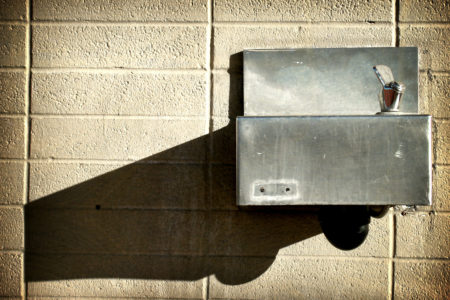
“Anything above zero is harmful. Just like crack cocaine and heroin, there’s no safe amount,” Saff told Natural News.
Lead exposure in children can lead to:
- Nervous system damage
- Learning disabilities
- Shorter stature
- behavioral effects
- Impaired hearing
- Impaired formation and function of blood cells
While public officials grapple with this issue, citizens can speak out and stand up concerning water safety.
Is There Anything I Can Do?
Yes, everyone, including Latinos, has an opportunity to protect children from harm.
Praxina Guerra, a fifth-grader in San Antonio, is one example of this.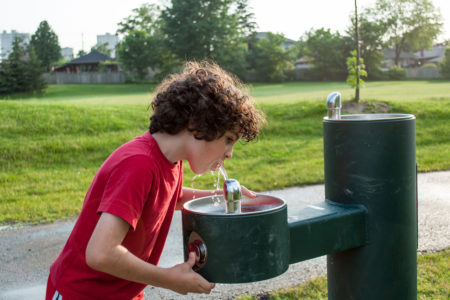
Guerra wanted to help her peers achieve better personal health. She worked with her teacher, Cynthia Lopez, to raise money to add a Water Bottle Fountain at their school. Classic water fountains aren’t always accessible or safe for kids, but Water Bottle Fountains filter clean water for easy filling and refilling of water bottles.
We then worked with Lopez to create a Water Bottle Fountain Action Pack with coaching assistance to help school leaders do the same in their schools.
Researchers recommend people act by contacting schools, state legislators to urge for strict water safety regulations and thorough testing. This could help keep your children safe.
People cannot hesitate to act in this issue, according to Dr. Sean Palfrey, the Medical Director of the Boston Lead Poisoning Prevention Clinic.
“Lead is a potent neurotoxin, affecting the way our kids learn and behave,” Palfrey said. “There is no safe level of lead for children.”
Don’t forget to submit your comment to the EPA, telling them why you and your family need clean waters!
EMAIL EPA: WE WANT CLEAN WATERS!
Take steps to make your children’s schools safer using Salud America!‘s Water Bottle Fountain Action Pack!
GET YOUR WATER BOTTLE FOUNTAIN ACTION PACK!
Editor’s Note: This article is part of a collaboration between Salud America! and the Hoffman Toxicant-Induced Loss of Tolerance (TILT) program at UT Health- San Antonio. To find out if you are TILTed due to exposure to everyday foods, chemicals, or drugs, take a self-assessment or learn more about TILT.
By The Numbers
1
Quick Survey
Can help you find out how chemically sensitive you are


